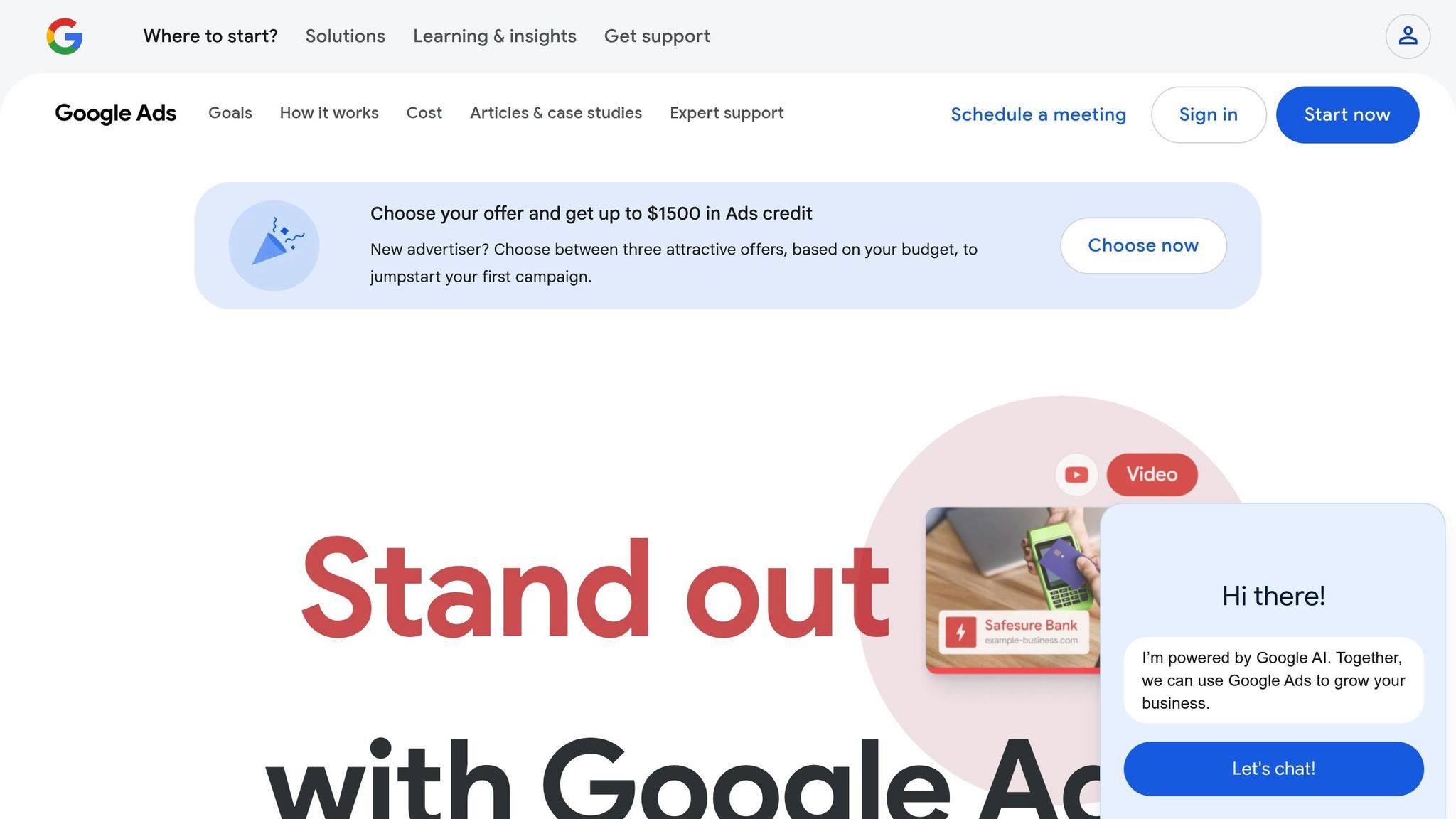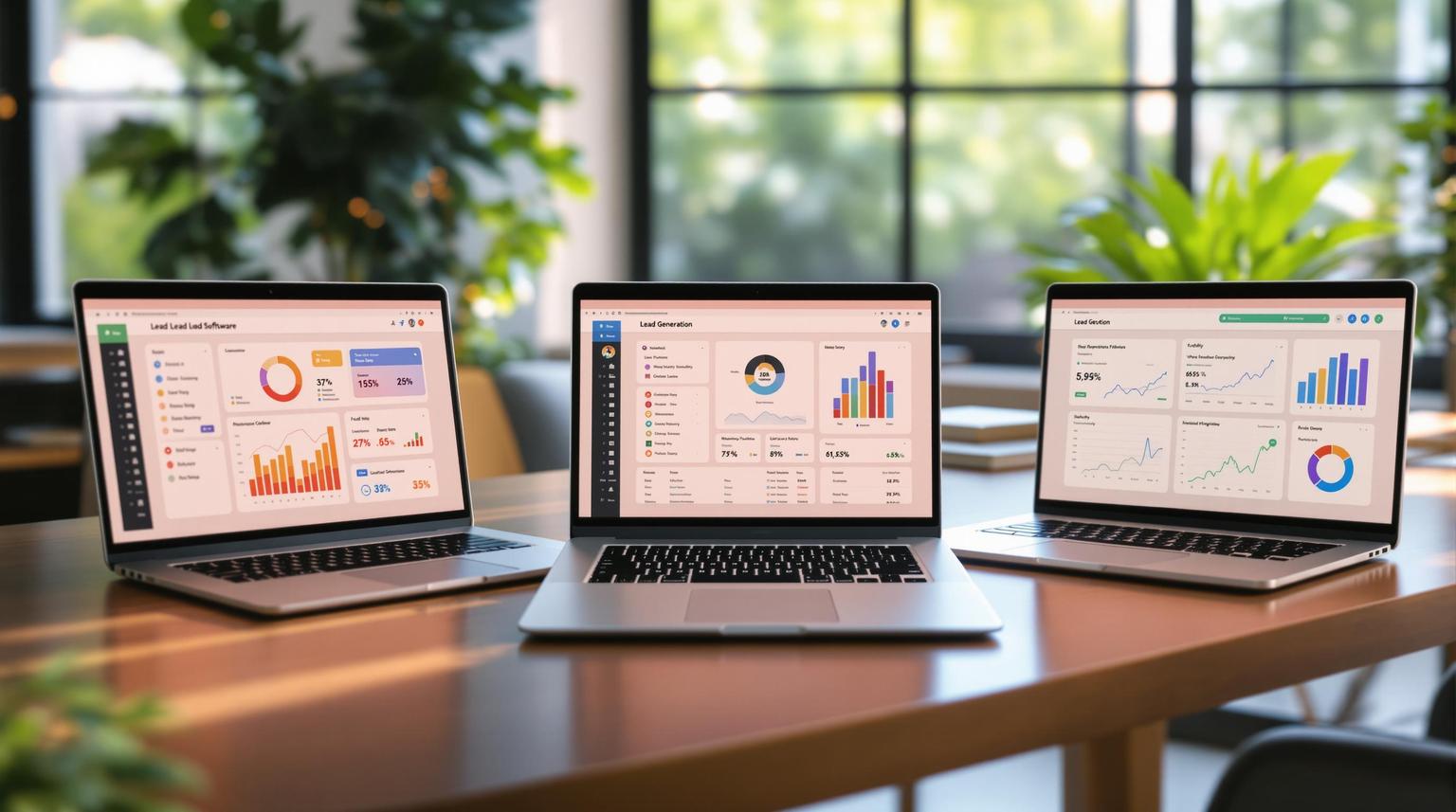Retargeting ads help SaaS companies turn website visitors into paying customers by focusing on users who’ve already shown interest. Here’s why they work and how to get started:
- Boost Conversions: Re-engage users who didn’t sign up or purchase.
- Lower Costs: Target warm leads instead of cold audiences.
- Personalized Ads: Show ads based on user behavior (e.g., pages visited).
- Support Long Sales Cycles: Keep your product visible over time.
Quick Start:
- Set Up Tracking: Add retargeting pixels to key pages (pricing, sign-ups).
- Segment Audiences: Group users (e.g., trial users, demo requesters).
- Choose Platforms: Use Google Ads, Facebook, LinkedIn, or Twitter based on your audience.
- Launch Campaigns: Start small, analyze results, and refine.
Retargeting can improve click-through rates, reduce costs per acquisition, and increase user lifetime value. Focus on tailoring ads to different lead stages for better results.
Effective Google Ads Remarketing Techniques for Growth

Retargeting Mechanics
Grasping how retargeting works is key for SaaS companies to run effective campaigns. Let’s break down the main technical elements that make retargeting tick.
Pixel Tracking
A retargeting pixel is a small JavaScript code snippet added to your website. When someone visits your site, this pixel generates a cookie that tracks their page views and actions. This cookie then signals ad platforms to show retargeted ads to the user as they browse other sites.
To make the most of pixel tracking, add these snippets to high-priority pages like product pages, pricing sections, sign-up forms, documentation, and blog posts.
You can also boost targeting precision by combining pixel tracking with your existing customer data.
Customer List Targeting
Customer list targeting uses data you already have - like email addresses from newsletter sign-ups, free trial users, demo requests, abandoned carts, or previous buyers. By uploading this information to ad platforms, you can match it to user profiles and serve highly targeted ads.
Now, let’s explore how the major ad platforms support these strategies.
Main Ad Platforms
Different ad platforms bring unique strengths to SaaS retargeting. Here’s a quick comparison:
| Platform | Best For | Key Features |
|---|---|---|
| Google Ads | Search intent & Display Network | Cross-device tracking, YouTube integration |
| Facebook/Instagram | B2C SaaS, visual products | Behavioral targeting, Instagram Stories |
| B2B SaaS, enterprise | Job title targeting, InMail campaigns | |
| Tech-savvy audience | Interest-based and conversation targeting |
When choosing platforms, think about where your audience spends time online, the type of creative assets you have, your budget, and how well the platform fits into your existing tools. The goal is to pick platforms that align with your audience’s habits and your campaign goals.
Impact on SaaS Conversion Rates
Conversion Rate Data
Retargeting has proven to be a game-changer for improving SaaS conversion rates across the funnel. Studies show that retargeted ads often achieve much higher click-through rates compared to standard display ads. For SaaS businesses, this means better results - more trial sign-ups, increased demo requests, faster paid conversions, and greater success in encouraging feature upgrades. These numbers clearly show how retargeting can deliver measurable results.
ROI and Cost Advantages
Retargeting doesn't just improve conversions; it also makes campaigns more cost-effective. SaaS companies often see lower costs per click (CPC) and cost per acquisition (CPA), along with better return on ad spend (ROAS). Plus, users brought in through retargeting tend to have higher lifetime value, making the investment even more worthwhile. Tailoring messages to different lead stages can amplify these benefits even further.
Targeting Based on Lead Stage
Focusing on specific lead segments can yield better results:
- Trial Users: Highlight essential features, share customer success stories, and provide simple onboarding resources to keep them engaged.
- Demo Requesters: Use timely follow-ups and limited-time offers to create urgency while maintaining consistent communication.
- Abandoned Carts: Reconnect with potential customers by showcasing time-sensitive discounts, guarantees, social proof, or feature comparisons.
- Active Free Users: Spot opportunities for upgrades by analyzing usage patterns. Promote advanced features and integrations when users hit feature limits or show signs of needing more.
sbb-itb-9cd970b
Best Practices for SaaS Retargeting
Audience Segments
Divide your audience based on their behavior to make retargeting more effective. Pay attention to how users interact with your platform to identify distinct groups and create personalized messages for each. Regularly review and analyze user behavior to keep these segments accurate and ensure your campaigns stay on target. Once your audience is well-defined, focus on creating ads that resonate with each group.
Platform Selection Guide
Pick a retargeting platform that helps boost conversions for your SaaS product. Each advertising platform has its own strengths, depending on your product type and target audience.
Key Features to Consider
When choosing a retargeting platform, keep an eye on these important aspects:
- Audience Targeting: Look for options to segment users by behavior, search intent, or professional details like company size, industry, or job title.
- Budget: Compare the cost of advanced targeting features with your available budget.
- Campaign Options: Ensure the platform supports the ad formats you need, whether it’s display, search, video, or dynamic ads.
- Tracking & Reporting: Prioritize platforms with reliable tracking tools that provide clear, actionable insights.
- Integration: Verify compatibility with APIs, tag managers, or SDKs for smooth integration.
For enterprise SaaS, platforms with professional targeting options may be a better fit. Meanwhile, self-service products often perform well on platforms that attract users with strong purchase intent.
Match the platform to your budget, sales cycle, and customer profile. Pay attention to factors like conversion tracking, audience match quality, cost per lead, and attribution accuracy.
Ready to get started? Check out our quick start guide to set up your platform with ease.
Next Steps
Quick Start Guide
Here’s how to kick off your SaaS retargeting campaign:
-
Set Up Tracking Tools
Add retargeting pixels and conversion tracking to key pages like sign-ups, activations, and purchase pages. Integrate these with your analytics tools for better insights. -
Define Your Audience
Group users based on their behavior - trial users, visitors to your pricing page, inactive customers, or those who haven’t upgraded yet. -
Launch Your First Campaign
Start with a campaign targeting your most promising audience segment. Allocate a budget of $500–$1,000 and keep an eye on metrics like CTR, CPA, and ROAS. -
Refine and Expand
After 2–3 weeks, analyze your campaign’s performance. Adjust your targeting, ad creatives, and bidding strategies as needed. For campaigns that perform well, increase your budget and test additional audience segments. Check out the resources below for more ways to improve your efforts.
Additional Resources
AI tools can help you fine-tune your campaigns, improve targeting, and increase conversions. Consider using:
- Marketing automation platforms for managing campaigns
- AI-powered chatbots to engage leads
- Analytics tools for tracking performance
- CRM systems to organize and manage customer data
For a curated list of tools to enhance your retargeting campaigns, visit Top SaaS & AI Tools Directory. This resource includes solutions for lead generation, marketing automation, and customer engagement to help you get the most out of your campaigns.



